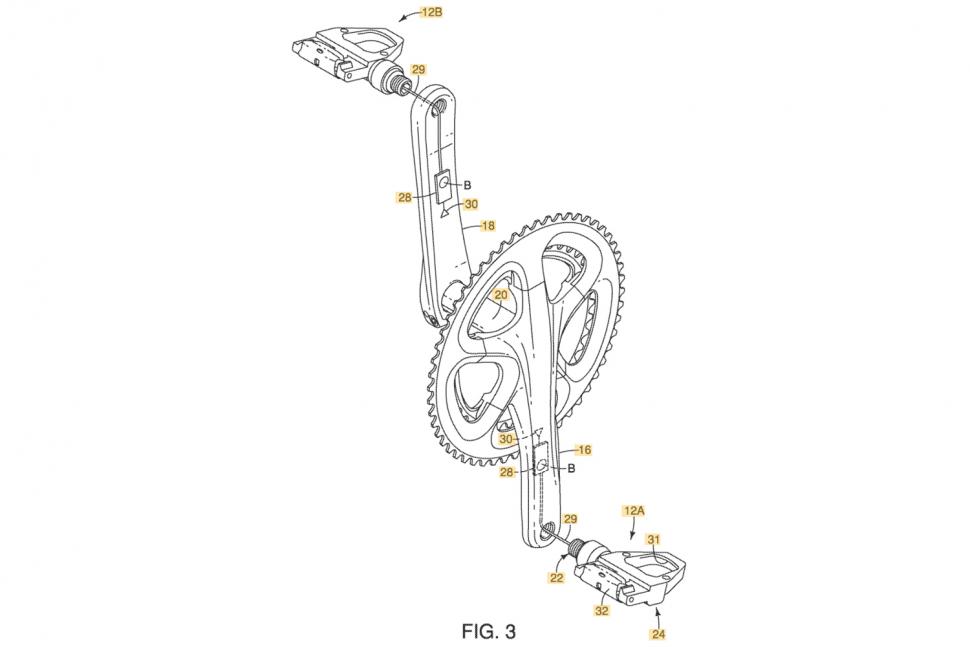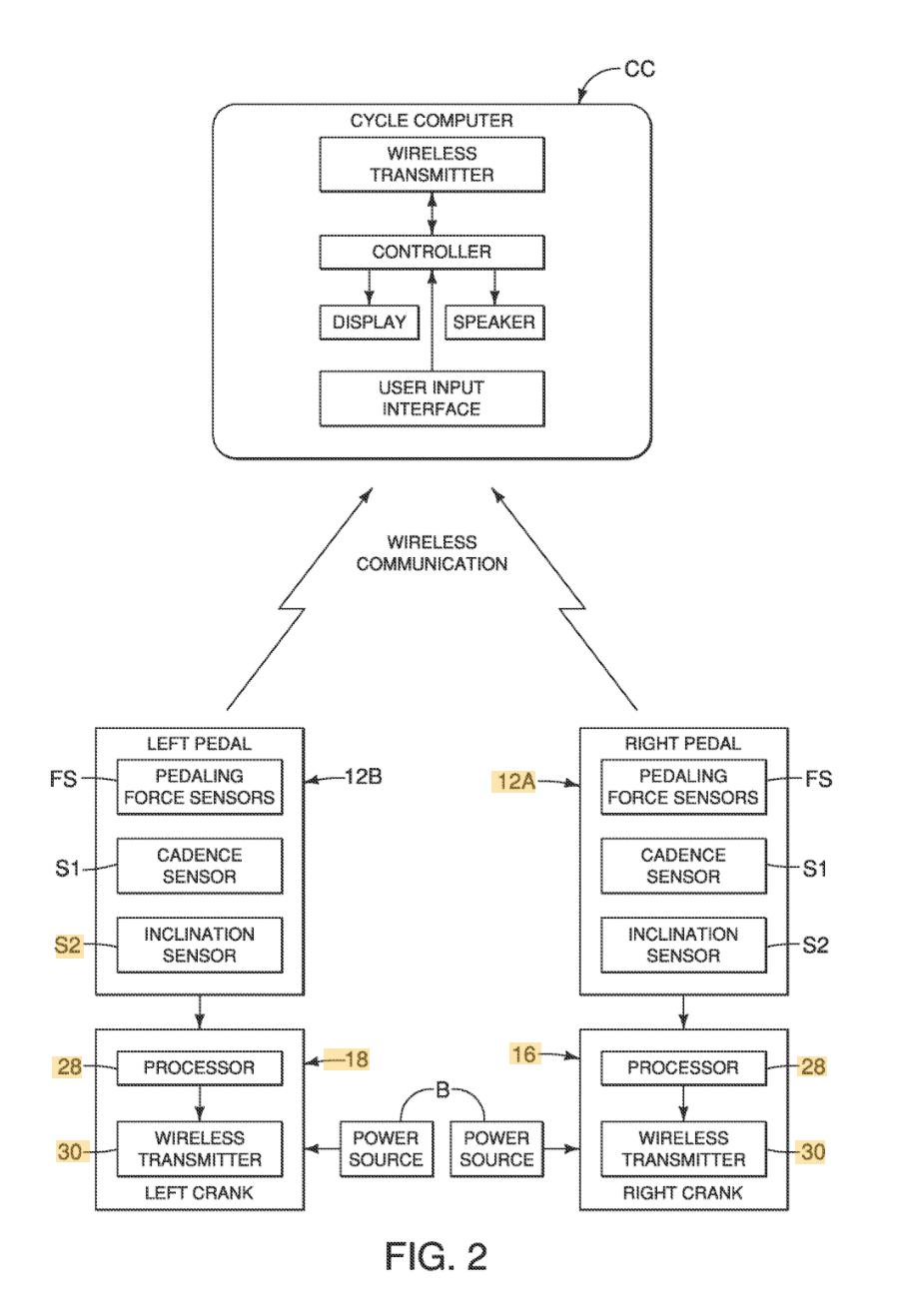- News
- Reviews
- Bikes
- Components
- Bar tape & grips
- Bottom brackets
- Brake & gear cables
- Brake & STI levers
- Brake pads & spares
- Brakes
- Cassettes & freewheels
- Chains
- Chainsets & chainrings
- Derailleurs - front
- Derailleurs - rear
- Forks
- Gear levers & shifters
- Groupsets
- Handlebars & extensions
- Headsets
- Hubs
- Inner tubes
- Pedals
- Quick releases & skewers
- Saddles
- Seatposts
- Stems
- Wheels
- Tyres
- Tubeless valves
- Accessories
- Accessories - misc
- Computer mounts
- Bags
- Bar ends
- Bike bags & cases
- Bottle cages
- Bottles
- Cameras
- Car racks
- Child seats
- Computers
- Glasses
- GPS units
- Helmets
- Lights - front
- Lights - rear
- Lights - sets
- Locks
- Mirrors
- Mudguards
- Racks
- Pumps & CO2 inflators
- Puncture kits
- Reflectives
- Smart watches
- Stands and racks
- Trailers
- Clothing
- Health, fitness and nutrition
- Tools and workshop
- Miscellaneous
- Buyers Guides
- Features
- Forum
- Recommends
- Podcast
TECH NEWS
 Shimano Power Pedals 4
Shimano Power Pedals 4Is Shimano launching power meter pedals? 2020 patent for new sensor gives us hope
Shimano has a patent for a pedal that includes shear force sensors and bending force sensors, suggesting that a pedal-based power meter from the Japanese component giant could be on the way.
Shimano was last week granted a patent for a piezoelectric sensor (piezoelectricity is the electric charge that accumulates in some solid materials when mechanical stress is applied) for a bicycle component that referred to an existing patent for the pedal.
> Review: Shimano R9100-P Power Meter
If you've ever read patents you'll know that they can be heavy going and repetitive, but the gist is that Shimano's system detects your pedalling force. From there, it's a short step to calculating power (power equals force times velocity, so chuck in a cadence sensor and you're pretty much there!).
Shimano already has its own power meter, the R9100-P chainset, but this is Dura-Ace level, so sits at the top of Shimano’s range. It costs a good deal of money (£999.99 without chainrings) and ties you into using a 24mm bottom bracket axle.
Shimano also bought Pioneer's power meter business earlier in the year. The Pioneer system is crank-based too.
So could a pair of Shimano power meter pedals be a game-changer?
>Tech firm claim they can make power meter for just $6
It’s worth pointing out that most power meter pedal designs base themselves around a Look Keo cleat system. Riders that prefer Shimano cleats have been left out a little and if the fact that Garmin itself shows you how to migrate your Vector 2 pedal axles over to Shimano Ultegra 6800 pedal bodies, it isn’t a stretch to conclude that there is a market for a power meter pedal for Shimano cleat users.
Shimano’s patent drawings have left us with some burning questions. A quick look at the drawing shows us that the pedal axles contain the pedalling force sensors, cadence sensor, and inclination sensor. This then connects via a cable to the chainset which houses the processor and a wireless transmitter.
The patent drawings don’t make it clear whether the processor and wireless transmitter pieces are attached to the outside of the crank, or embedded within it.
> 6 reasons why you should buy — and use — a power meter
How useful would a power pedal be if it needed to be connected via a cable to the crankset?
Part of what makes power meter pedal designs so popular is the ability to swap them easily and quickly between bikes using one or two basic tools. For many power meter pedal designs from the likes of Garmin, PowerTap, Favero, and others, the process of installing and removing the pedals is just the same as standard pedals.
Requiring a power meter pedal to be connected via a wire to additional hardware housed on or in a crank could compromise this.
> Power meters: 7 hidden hassles you'll want to try and avoid
Could Shimano bring power down to a 105 level?
As mentioned, Shimano’s current power meter offering is currently only available in the Dura-Ace groupset, the company’s most expensive road component line. A power pedal system could be a way for Shimano to bring power meter technology down to lower price points – maybe even to 105 (two levels below Shimano) – matching the likes of Stages and 4iiii.
With the improvements in shifting and braking, especially on the R7020 line of Shimano’s 105 groupset, the gap to the more expensive Ultegra has narrowed massively recently. Adding a power meter option that could be easily added to 105 groupsets would close that gap further.
> Cycling power meters: explore these 24 systems to find the best one for you
Will we see a Shimano power meter pedal design hit the market any time soon?
It's difficult to say. Like other leading companies, Shimano applies for – and receives – many, many patents every year, only a small number of which ever result in new products coming to market.
Plus, that wire connection to the cranks mentioned above makes Shimano's design a little less attractive from the outset than options already available from the likes of Garmin. Unless Shimano is planning to introduce innovative new features, we'd say that it would be starting off at a disadvantage there.
If Shimano was able to introduce something at a lower price than existing options, though, maybe it's a go-er.
We asked Shimano to comment on the pedals, of course, and – predictably – Shimano declined the invitation. For more of a deep dive on Shimano's power meter patents, an interesting article was published on BikeRadar recently that looks more closely at the 2014 patent on which their most recent filing relates to.
Latest Comments
- BikingBud 9 min 29 sec ago
Yup - Rivermind! ****SPOILER ALERT***** https://www.radiotimes.com/tv/sci-fi/black-mirror-common-people-ending-e...
- brooksby 39 min 9 sec ago
All of which is, IMHO, marketing horlicks. That being said, I much prefer this logo to the old 'Comic Sans using Word on Windows 98' one…
- lesterama 1 hour 11 min ago
A friend told me that Gravaa doesn't work with inserts. Visma actually glued their tubeless tyres on to avoid tyre detachments! Sounds like a...
- Velophaart_95 1 hour 30 min ago
That was my first thought when I saw, and read it........
- qwerty360 1 hour 37 min ago
My understanding was traffic data also suggests that its actually made driving quicker not slower in Paris....
- Benthic 1 hour 53 min ago
"...pedestrians remain unable to access the site due to safety reasons." Who is causing the danger?
- mitsky 3 hours 1 min ago
"... struck by a driver..." http://rc-rg.com
- Rendel Harris 3 hours 14 min ago
That's only for longer journeys; obviously for short trips he employs the sedan chair.
- Tony W. 3 hours 54 min ago
In accordance with the highway code ? bus driver was breaking the speed limit, overtaking a child on a bicycle, he should've as far right as...
- polainm 4 hours 10 min ago
One is permantly in misery mode, the other all blacked out in stealth mode.



Add new comment
6 comments
Since you pedal in circles rather than a straight line you'd be wanting power = torque x angular velocity
Put it on indiegogo and sign me up! LIMITS!
Not least, is it going to be based on Ultegra 6700?!
What happens to the cable when your Shimano DS crank arm inevitably shears off
**sigh** Really? Patent filings are a dime a dozen from all leaders in their field, especially in the USTPO as the Us patent system is fundamentally broken, with very little requirement to show that a patent could actually work in real life.
Actual products based on those patents are much rarer beasts. Since Shimano already has access to several Power meter designs it seems unlikely they would produce another from scratch unless it was a game changer. This patent appears more mechanically complicated that most existing designs so I doubt it would be, especailly when you can just wrap the dura-ace one in cheaper materials.
Its also worth noting that the Power Meter market has some stupidly high margins for some pretty basic tech - how do I know that you ask - the fact that for the same price as a decent PM ~£500-£1000 you can get an entire Smart trainer with a PM built in.
I don't know anything about this, but presumably part of the cleverness / cost is in making the PM small, light and weatherproof for outdoor use (as well as accurate), which isn't necessary to the same extent when built into a smart trainer?